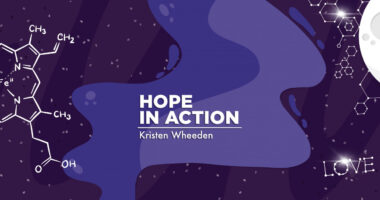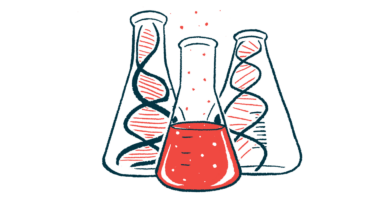Peritoneal Dialysis May Help Stop AIP Attacks

Acute intermittent porphyria (AIP) attacks can be stopped by regular peritoneal dialysis, a treatment that eliminates waste products by rinsing the inner abdomen, as reported in a case study.
According to researchers, this study suggests that peritoneal dialysis may be used both as a preventive treatment and during AIP attacks.
The study, “Peritoneal dialysis resulting in discontinuance of recurring attacks of acute intermittent porphyria: A case report,” was published in the journal Seminars in Dialysis.
AIP is a form of porphyria caused by a deficiency in the hydroxymethylbilane synthase (HMBS) enzyme, which plays an essential part in producing heme, a molecule that carries oxygen in red blood cells.
Without enough HMBS, intermediate porphyrin molecules called 5-aminolevulinate (ALA) and porphobilinogen (PBG) build up and cause organ damage. Porphyrin accumulation can trigger acute attacks characterized by abdominal pain, vomiting, severe constipation, and psychological disturbances.
Acute attacks are commonly treated with injections of hemin (sold as Panhematin), which lowers porphyrin production and accumulation, and glucose, which helps limit the number of porphyrins released by cells. More recently, Givlaari (givosiran) also was approved to lower the frequency of acute porphyria attacks.
In this report, investigators at the Viborg Regional Hospital in Denmark described the case of a 78-year-old man with AIP who was treated with peritoneal dialysis due to kidney failure.
Peritoneal dialysis uses the lining of the abdomen (peritoneum) to filter blood inside the body. In advance of the procedure, a soft tube (catheter) is inserted into the abdomen. During treatment, a sterile cleansing fluid with salts and other substances is pumped through the tube, absorbing waste products that travel across the peritoneal membrane. Fluid then is drained from the body.
“To our knowledge, no previous studies investigated [peritoneal dialysis] as a treatment for AIP,” the team wrote.
The man had experienced monthly AIP acute attacks across several decades with symptoms including severe abdominal and back pain, as well as tremors and muscle twitching. Hemin injections provided symptom relief within two to four days.
He developed nerve damage and iron overload (excessive iron storage in the body) as a result of hemin infusions. He was diagnosed with pulmonary emboli (blood clots getting lodged in the lungs), transient stroke, gout, and high blood pressure. He also had poor kidney function, which had been declining for at least 10 years, possibly due to AIP and high blood pressure. He never had undergone a kidney biopsy.
He was not treated with medicines known to worsen AIP, except for darbepoetin alfa due to his low red blood cell counts. This medicine, often used to treat anemia in patients with kidney disease, continued for two years without increasing the frequency of AIP attacks. As needed, he had blood removed to treat iron overload.
After he developed late-stage kidney disease, peritoneal dialysis was begun, which involved two daily fluid exchanges. During the six months of dialysis, he did not experience a single AIP attack.
“[Peritoneal dialysis] treatment was initiated to relieve uremic symptoms and overhydration and not as a treatment for AIP. As such, the perceived positive influence on AIP attacks was a secondary observation,” the researchers wrote. “Most [peritoneal dialysis] fluids contain glucose, which may explain why [peritoneal dialysis] prevents AIP attacks, but our patient was treated only with [peritoneal dialysis] fluids lacking glucose.”
Based on these findings, the team measured ALA and PBG levels in urine and peritoneal fluid and compared values with a control patient undergoing peritoneal dialysis. However, due to declining health and worsening nerve damage, the AIP patient opted out of dialysis and died shortly afterward.
Measurements from the case and control patients showed that both ALA and PBG were eliminated with peritoneal dialysis.
In the case patient, ALA was reduced by threefold and PBG by twofold in night and day waste dialysis fluids compared with urine. In the control patient, ALA and PBG declined by a factor of two in daytime dialysis fluid compared with urine, whereas nighttime fluid elimination resulted in a 25% decrease in ALA and a 44% increase in PBG.
“In this study, we concluded that [peritoneal dialysis] is a good treatment for eliminating the porphyrin metabolites, ALA and PBG,” the researchers wrote. “Because ALA is known to be cytotoxic and is considered responsible for AIP attacks, [peritoneal dialysis] can be used in the prophylactic [preventive] treatment of AIP and possibly also as a treatment during AIP attacks.”







